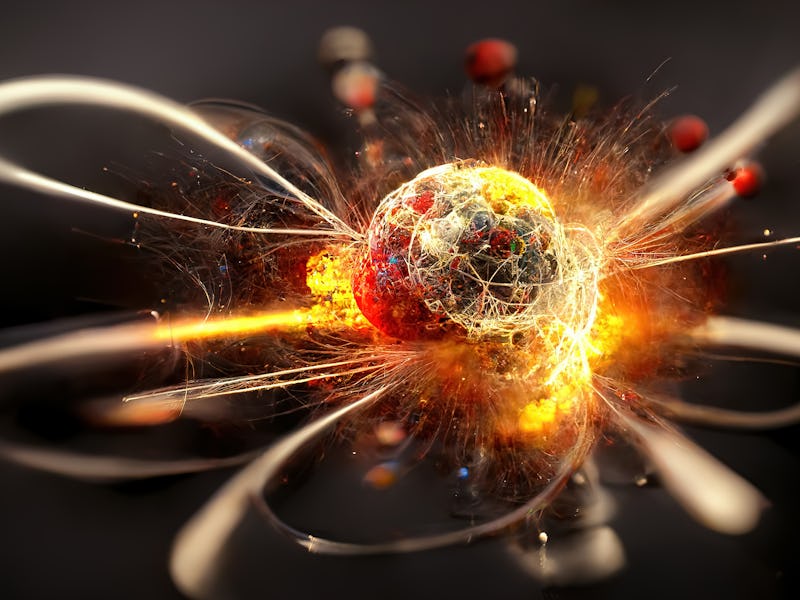Physicists discover a mind-bending puzzle about protons at the quantum level
Quarks can sneak in and give protons a little extra heft now and then.

Protons make up most of the visible universe. Now, in a new study published in the August 18 issue of the journal Nature, scientists find that because of the strange nature of quantum physics, protons are at times made up of particles heavier than protons.
HERE'S THE BACKGROUND — Protons consist of particles known as quarks. There are six kinds of quarks. Three are light quarks, ones lighter than protons — up, down, and strange. Three are heavy quarks, ones heavier than protons — charm, bottom, and top.
Protons are generally thought to consist of two up quarks and one down quark, all bound together by a sea of particles known as gluons. However, quantum physics suggests there is no such thing as empty space, not even within protons. Instead, what is apparently empty space is buzzing with an infinite number of virtual particles and virtual antiparticles that briefly pop in and out of existence. As such, there is a chance that quarks other than the up and down kind can manifest inside protons.
Previous research found that heavy quarks can exist within protons in extreme high-energy collisions and that protons can also possess strange quarks and strange anti-quarks under normal circumstances. However, it was uncertain whether heavy quarks might also regularly help make up protons.
The configuration of quarks in baryonic particles.
WHAT DID THE SCIENTISTS DO? — In the new study, a team of scientists known as the Neural Network Parton Distribution Function Collaboration analyzed data from particle collisions — say, between a proton and an electron, or between two protons. They searched for evidence of charm quarks, the lightest of the heavy quarks. (A proton has a mass of about 940 million electron-volts, whereas the charm quark has a mass of about 1,500 million electron-volts.)
During particle collisions, extrinsic charm quarks — ones that don't normally belong within protons — would appear in the center of collisions, popping into existence with the help of the high energies of the impacts. In contrast, intrinsic charm quarks — ones that existed within the protons before the collisions — would appear far away from the center of the impacts, moving in the same direction of travel as the proton they were originally part of.
WHAT DID THEY FIND? — Using artificial intelligence software to analyze huge volumes of particle collider data, the scientists detected evidence of intrinsic charm quarks within protons. It makes up about 0.62 percent of the proton, they found.
"The proton, a particle which accounts for essentially all mass in the visible universe and that is at the core of all matter, that we have studied extensively for more than 100 years, continues to be a source of amazing surprises," study co-author Juan Rojo, a theoretical particle physicist at Vrije Universiteit Amsterdam, tells Inverse. "This remarkable result highlights the beautiful and ever-surprising character of quantum theory — we have shown that the proton contains constituents, charm quarks, whose mass is larger than that of the proton itself."
WHAT'S NEXT? — Future research can see if the proton may also intrinsically possess the two heaviest quarks — bottom, which has a mass of about 4,200 million electron-volts, and top, which has a mass of about 173,000 million electron-volts. This latest work is just "the start of a long-term research program that aims to unveil the possible existence of other intrinsic heavy quarks in the proton," Rojo says. Such work could help answer "what determines the mass of the proton, one of the major open questions in physics," he adds.